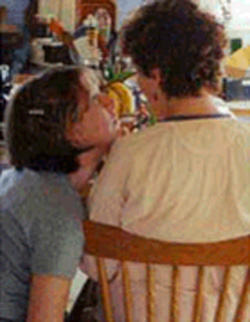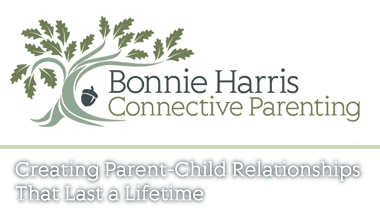 Communication is the core of the parent/child relationship. It makes or breaks connection. It’s not so much what we say but how we say it that conveys meaning to our children. We may want to get a point across, but tone of voice and body language determine whether the child hears what is intended or a different message entirely.
Communication is the core of the parent/child relationship. It makes or breaks connection. It’s not so much what we say but how we say it that conveys meaning to our children. We may want to get a point across, but tone of voice and body language determine whether the child hears what is intended or a different message entirely.
“What is it you want?” can be said with genuine curiosity and encouragement or with criticism and judgment. One reading tells the child, What you want is important to me. A different reading says, You are annoying. Leave me alone.
Good communication requires knowing when to ask questions and when to make statements. There are times for each. Usually we get it wrong.
Your child is upset. You know this because of her emotions or behavior. You want to know why, so you ask:
- What’s wrong?
- Why are you so upset?
Or you can’t avoid the temptation to teach if you know what happened:
- When are you going to learn to just walk away?
- Why do you keep provoking him?
When we want children to tell us what’s going on, we ask questions—the last thing kids want to hear, especially because they often don’t know. Questions at this stage can block communication, especially when children are not sure how their answers will be received.
Unintentionally, we set children up to lie. Questions before connection feel like interrogations leaving the child thinking:
- Mom doesn’t care how I feel, she just wants me to do what she wants.
- Should I tell her what she wants to hear or what she doesn’t?
- What’s Dad after? I’ll get in trouble if I tell the truth?
Instead of blocking communication, we need to build bridges that invite our children to talk to us. They need to trust that we hear them, that we won’t tell them what to do, that we won’t be dismissive. These questions don’t help:
- Don’t do that. How many times have I told you to leave him alone?
- He pushed you down? Oh my darling, are you alright? I’m getting on the phone with his mother right now.
- Oh come on, you don’t really feel upset about a silly thing like that, do you?
- I do, too, do what you want. Just yesterday we went to the park, remember?
Building bridges for opening up emotionally means making statements of understanding and validation. Think period at the end rather than question mark.
- It looks like you’re feeling really upset about something.
- I bet if I were you, I’d feel pretty confused about what she said.
- I wonder if you’re feeling left out. I can imagine that would hurt.
- Or simply listen attentively.
If your child feels your genuine concern, your statement is likely to prompt his response. If your child doesn’t like to talk or isn’t ready, there is no pressure since there is no question. Your statement lets him know that you care.
After connection is made and your child feels understood, it’s time for problem solving. This is the stage when we are most tempted to make statements, to tell our children what to do, or to fix the problem.
- You need to tell her to stop calling you names.
- Just walk away when you’re angry.
- Stand up for yourself. Use your words.
- If you want to get on the team, I’ll talk to the coach. He owes me one.
Instead, it’s best to lead their thought process and guide them toward finding their own solutions.
- What is it you want from her?
- What do you think she needs from you in order to do that?
- Would doing that get you what you want?
Or if you don’t like what your child is doing:
- That is not okay with me. You want A, and I want B. What do you think we should do about it?
- I don’t like being spoken to that way. How can you say what you want differently?
- I’m feeling ignored. Can you tell me when you will do what I asked?
If your child is stuck, ask if he’d like your help, but be sure to respect that your solution might not be right for your child.
- Do you want my opinion? / Would you like a suggestion?
We love to tell our kids what they should do. But when we do, we project ourselves into their experience based on what we would do. Our children need to know how to solve their own problems their way, learning through trial and error, so when we’re not in the picture, they don’t turn to someone else to solve it for them.
Is there a better life lesson?
You might also like:







